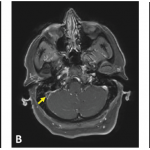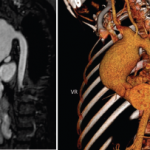Behçet’s is a disease of flares and, as sportscasters recounted, during the national championships of 2007, Richards’ condition was flaring away with nasty mouth sores and bronchial irritation. For that competition, Richards ran three 400-meter heats in a three-day period. While medication had reduced her symptoms, she struggled in the finals and her time in the event plunged.
For those of you who have never run the 400-meter, don’t. It is a virtual sprint and you are near anaerobic the whole time. Your blood boils with lactic acid. That stuff is nasty and, when you finish, you want to throw up. I cannot imagine what it feels like to breathe 40 times a minute through a mouth blistering with sores.
Clinical Questions Abound
As a physician, I am intrigued by the accounts of the athletes’ illnesses and how they relate to the care of patients. (At long last, we are onto something relevant. It may take a while, but we usually get there.) Either the doctors caring for these athletes were terrible or they were terrific. For example, as Gail Devers testified to Congress, her physicians missed her thyroid problems for two years, chalking up symptoms of weakness, rapid heart rate, and severe weight loss to the changes expected of an Olympian in training.
A weight loss of 30 pounds? Seems too much to me. A heart rate of 140? All right for the finish of a race, but in the calm of the doctor’s office, that’s on the high side. Hello, but even a medical student knows that resting tachycardia merits a tube of blood for thyroid functions. What about the amputations? As an internist, I would try propylthiouracil first.
Nevertheless, despite a slow and bumpy path to diagnosis, the doctors eventually got it right. They tuned Devers’ thyroid-stimulating hormone perfectly so that she could vanquish the field in the finals and relish her gold. That’s slick doctoring to me. I give those physicians an “A” for quality and would throw in some bonus pay for performance.
Track is very simple. The fastest person wins and, in the sprints, victory is measured in hundredths of a second. In real life, these athletes are fiercely competitive, driven, and self-centered. Some are downright mean, enjoying the competition’s stumbles and flame-outs.
To make for better TV, public relations specialists and press agents are needed to spruce up the athletes, and it seems that the simplest way is to give them a dying relative or dread disease. What better way to enlarge and soften a persona than a story of a phoenix-like ascent from the ranks of the invalid and infirm to the peaks of Olympic glory?
Do Tales of Athletic Miracles Help or Hinder?
The sports pages are filled with cynicism and doubt and it is easy to look with suspicion at athletes, especially those who rake in millions of dollars. These stories, however, have a very serious side because they affect the public perception of disease. If through medication, prayer, or sheer grit, an athlete can overcome Graves’ disease or Behçet’s, what does it say about the diseases’ severity? Are these stories of triumphant recovery enlightening or are they misleading about the totality in which immune disorders can be overcome?



